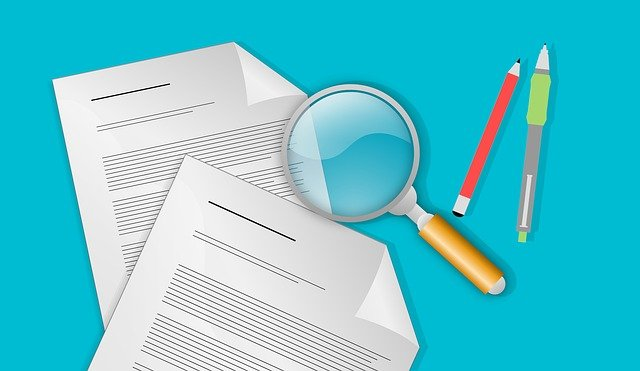What are Accounts Receivable?
Accounts receivable is an accounting term that refers to money owed to your business. When a company provides goods or services under the agreement the customer pays later, the money the customer owes becomes an account receivable. Accounts receivable is sometimes abbreviated to AR or A/R.
Businesses that sell on credit (providing goods or services and getting paid later) must track the money for accurate accounting. The accounts receivable ledger provides a convenient tracking method to ensure your business’s financial information is correct.
Invoicing for Accounts Receivable Account

When a business provides goods or services on credit, it issues an invoice to the customer for the amount owed. The invoice acts like a bill of sale only; instead of listing the money the customer paid, it lists the amount owed and the due date.
After issuing the invoice, the transaction is recorded as a journal entry twice in accounting. It goes under accounts receivable as a debit and sales as a credit.
Let’s look at an example.
Example of Accounting for Receivables
Accounting for receivables involves multiple steps. For this example, we will use the fictional companies Warren’s Wholesale and Rachael’s Retail.
The fictional company, Warren’s Wholesale, provides goods to Rachaels Retail on credit, and Rachael’s pays off the debt in 30 days. So, the first step is to issue an invoice that includes the following:
- The invoice number.
- The seller’s company name and info.
- The buyer’s company name and info.
- A description of the goods or services.
- Date of the goods sold.
- Date of the invoice.
- The amount of the invoice.
In this case, Rachael’s Retail purchases $25,000 of inventory on credit. Warren’s Wholesale issues the inventory with an invoice detailing the $25,000 and when it’s due.
The accounting department enters the $25,000 as a debit in accounts receivable and a credit in the sales account. When Rachael’s Retail issues payment for the invoice, the accounting department balances the book by entering the $25,000 as a credit to accounts receivable and debit from sales.
What is an Accounts Receivable Journal Entry?

When you input information for a new accounts receivable account, it is called an accounts receivable journal entry. Accounts receivable journal entries are essential to tracking your company’s overall revenue.
How to Use Accounts Receivable Journal Entries
Most accounts receivables journal entries go into the general ledger or general journal and sometimes are entered into a subsidiary journal. The journal entry should include both the debit from accounts receivables and credit to sales.
It should also include relevant information about the transaction, such as the customer’s information. You will credit accounts receivable when the invoice is paid.
Why do companies have Accounts Receivables?
While it would be ideal to always get paid at the time goods or services are rendered, that’s just now how it works in a lot of cases. In the business-to-business (B2B) and business-to-government (B2G) sectors, invoicing for goods and services are the norm. Some business-to-consumer (B2C) companies, such as medical practices or landscaping, use invoicing to bill customers.
Providing goods and services on credit gives your company more options to sell to customers. It’s such a common practice that many businesses have an entire accounts receivable department headed by an AR manager.
Frequently Asked Questions
Here are some of the most common questions about accounts receivable.
What’s the difference between Accounts Receivables and Accounts Payable?
Accounts receivable refers to money owed to your company, while accounts payable refers to money your company owes. When you issue an invoice for goods or services purchased on credit, your company enters it as account receivable. The customer or business that owes you the invoice amount enters it in their ledger as an account payable.
For accounting purposes, accounts receivable is an asset that represents future revenue or value coming into the company. Your accounts payable, which represents money you have to pay in the future, is a liability.
What is the Accounts Receivable Turnover Ratio?
The accounts receivable turnover ratio is an accounting formula showing how effective your company is at collecting unpaid invoices. It is an essential metric in understanding the value of your A/R department.
The turnover ratio helps you understand how long it takes to collect on outstanding debt during the accounting term. An accurate understanding of when and how money comes into your business helps predict and plan your cash flow.
Turnover Ratio Formula
The accounts receivable turnover ratio formula is:
Net annual credit sales ÷ Average accounts receivable = Accounts Receivable Turnover
The higher the turnover ratio, the more efficient your company is at collecting the debt. However, be careful that your policies are not restrictive that you’re losing on sales.
Conversely, a lower ratio doesn’t necessarily mean your company is dealing with bad debt. It depends on your specific terms and if your customers need more than 30 days to pay the invoice.
Lenders will probably look at your accounts receivable turnover ratio if your company considers small business financing or invoice factoring. While it’s not the sole indicator of your company’s performance, it does help lenders identify healthy cash flow and predictability in the company’s A/R department.
What is the Accounts Receivable Aging Schedule?
The aging schedule organizes invoices by their due date. It helps companies track who pays on time and what invoices are past their due date.
A/R departments use the aging schedule to follow up with customers who went past the due date. Companies can customize the aging schedule to their preferred timeframe, but the most common aging schedules include the following:
- Under 30 days.
- 1-30 days past due.
- 30-60 days past due.
- More than 90 days past due.
The further the account moves into the past due, the more of an issue it becomes. If your company sees trends where outstanding invoices keep moving past due, you know you need to improve your credit and collection policies.
An up-to-date aging schedule helps identify and correct cash flow problems before they become major. You’re A/R department should track all invoices to identify issues and improve collections. It also helps you understand and predict when money is coming into the business.
What happens if a customer doesn’t pay?
While extending credit to your customers helps close sales and grow your business, some liabilities are involved. One of the major concerns is if a client or customer doesn’t pay their invoice.
When a customer doesn’t pay an invoice, it becomes bad debt. Your company should record the bad debt as an expense and write off the debt.
Customers defaulting on invoices happens sometimes, and it’s one of the risks of extending credit to your customers. If it happens frequently enough that your company loses profitability, you’ll need to examine ways to improve collection and reduce your bad credit liability.
Should my business automate Accounts Receivable?
Automated accounts receivable offers many benefits, depending on your company’s size, needs, and what you can afford. Whether your use accounts receivable automation software or outsource your A/R to a third-party automation service, it will incur an additional expense.
Adding an expense for A/R automation might be worth it if it helps you improve tracking and collecting invoices. Automation has several advantages, and most solutions fit within the existing accounting software.
With A/R automation, you usually get a built-in tool to create and send invoices, which are automatically entered as journal entries in the accounting ledger. Most automation systems include real-time tracking of the A/R turnover ratio and the aging schedule.
Automating your company’s accounts receivable department helps track the turnover ratio and aging schedule to improve the collection of outstanding invoices. Some systems allow you to automatically notify customers when their invoices pass the preset thresholds on the aging schedule.
Another benefit of automation is that it reduces the potential for human error in the accounting system. Ultimately, it comes down to your business and specific needs, but if your company processes a high volume of invoices with complicated payment schedules, then automation could help.
How can I turn Accounts Receivable into instant working capital?
When you extend credit and invoice your customers, it can sometimes take weeks to months to receive payment. While waiting for that money to come in, you still must cover expenses. The gap between your expenses and when you get the money you’re owed can cause cash flow problems or other issues.
You might wonder what you can do when the waiting period for getting paid puts financial stress on your business. It’s important to remember that your accounts receivables are an asset, and like any business asset, you have options to capitalize on its value.
One way to use your accounts receivable asset to gain access to working capital is to offer your invoices as collateral in small business financing. Whether you want to take out a term loan or another small business loan, offering collateral can help you get credit approval and secure higher borrowing amounts.
If you don’t want to incur debt, you can also consider Accounts Receivables Factoring, also called invoice factoring. This form of near-term financing is essentially selling your invoices to a third-party company.
You get a percentage of the invoice, called the advance rate, and the factoring company retains a small percentage as payment for their service, called the factoring fee. The remaining balance is released to you when the customer pays the invoice.
With receivables factoring, the factoring company becomes responsible for collecting from your customers and, in some ways, acts as your A/R back office. Just keep in mind that the high fees make it an expensive way to finance your company. Even so, it might be worth it if you need to turn outstanding invoices into immediate working capital.
Here’s a pro and con list for a quick summary.
Receivables Factoring Pros & Cons
Pros:
- Turn unpaid invoices into working capital.
- The factoring company collects from your customers.
- Easier to qualify than traditional business lending.
- Your business doesn’t incur debt.
Cons:
- Factoring fees make it an expensive way to borrow.
- Fees are based on how long it takes customers to pay their invoices.
Accounts Receivable – Final Thoughts
Accounts receivable are often a necessary part of a business’s accounting procedure. The practice is so commonplace that many companies have full-scale departments or even hire A/R vendors to handle the complex process.
As a small business owner, you must ensure your business is as profitable as possible. Tracking your accounts receivable is essential to understanding your revenue and cash flow.
You should pay close attention to your accounts receivable aging schedule and turnover ratio. Both metrics help indicate how well the A/R department is performing and when you need to improve collections or credit policies.
Accounts receivable also represent a business asset; like any asset, it directly relates to your company’s value. Assets affect your owner’s equity and the perceived value of your company to prospective investors or buyers.
If you want to learn about turning unpaid invoices into working capital, visit our receivables factoring page or contact us for more information.











